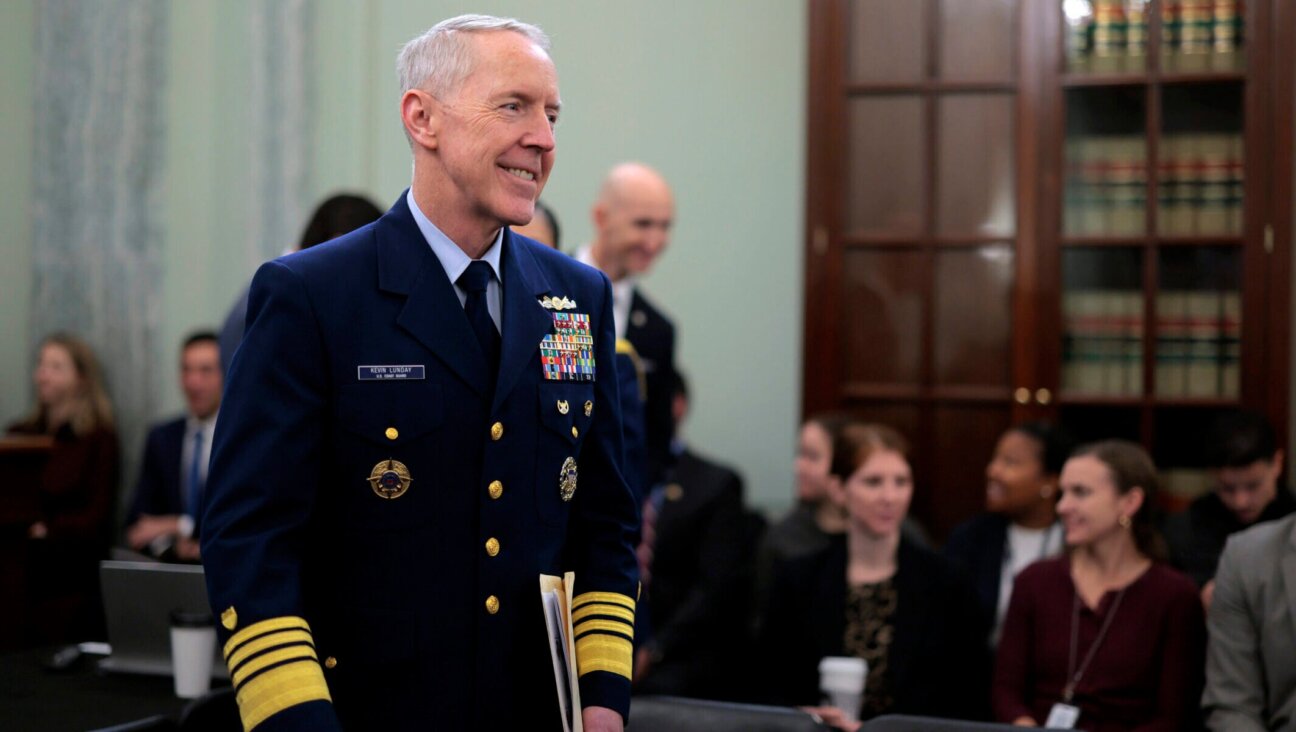Philip Glass Is Getting Older — for Better or Worse

Graphic by Angelie Zaslavsky
In the iconic painting by Chuck Close, composer Philip Glass seems to radiate a casual youthfulness. His gaze, slightly askew, possibly slightly stoned, seems at once to confront and look past the viewer. When the painting was made, Glass was a young, avant garde minimalist composer, with most of his great successes yet ahead. He seems almost immortal.
But of course, he isn’t — no more than the rest of us. Today, Glass’s visage is weathered, deeply lined. Love him or hate him, Glass is no longer the young upstart, but an established master on his way to being a kind of legend.
His sound is instantly recognizable. In some ways, he’s gotten old.
Thirty years ago, Glass collaborated with filmmaker Godfrey Reggio on “Koyaanisqatsi” — the title is a Hopi word meaning “life out of balance” – which changed film, music, and pop art. Today, its montages, pulsing music, and time-lapse photography are more commonly found in car commercials than art houses. But when it was released, Koyaanisqatsi was a landmark. It seemed to usher in a new way of seeing.
Reggio, too, has aged. Three decades and two –qatsi sequels later, he and Glass return with a meditation on mortality and transience, a slow moving and meditative work entitled “Visitors.” It’s not for everyone – even at the lone art house in New York playing the film in its first week of release, I was one of only four fans in the theater. But for those who relish cinematic languages of introspection and contemplation, “Visitors” is profound.
For a film with no dialogue and no conventional narrative, “Visitors” touches on many themes: the gaze of the viewer, the cycle of life and death, how we perceive and relate to one another. Visually, it consists of black and white montages – largely of decaying buildings, moonscapes, and abandoned industrial sites – interspersed with extreme close-ups of human faces, and one non-human one.
Thankfully,”Visitors” is more suggestive and less obvious than “Naqoyqatsi,” the last and least of the Glass/Reggio trilogy. What we see in the film is, itself, part of the point, as viewers impose narrative on faces which, in themselves, are largely opaque. Is the young girl fearful, or joyful? Is the crowd cheering, or crying? We spend long minutes gazing at the faces of Visitors’ visitors, but the meaning we ascribe to them is largely a product of our own projections. So too the film as a whole.
This point is reinforced by the appearance, amongst the humans, of a lowland gorilla – the credits inform us that this is Triska, a resident of the Bronx Zoo. Whatever meaning we think we can make out of the human faces slowly panning before our eyes, Triska confounds us. Who knows what she is thinking, if she is thinking, if we can understand what “thinking” means for a gorilla. And yet, Triska’s gaze also seems hauntingly readable: now angry, now curious. We have to remind ourselves that we really have no idea what to make of her.
At a certain point, we give up. Occasionally, a narrative can be deduced – one scene seems to be a group of people at a sports event – but usually not. And with the meaning-making of discourse eliminated, what’s left are what Thoreau might have called “the essential facts of life”: living, aging, dying. We don’t know anything about these people visiting planet Earth – only that their time is short, especially measured by the geological time of the moon, but even according to our own reckoning and the lines in their faces.
Experiencing the film in the midst of my 75-year-old mother’s battle with illness, and in a year in which many of my peers (I’m in my forties) faced life-or-death challenges of their own, the passage of time was predominant throughout. The film’s title appears etched in crumbling stone. A handful of time lapse sequences (something of a cliché today, but then again, Reggio largely invented this usage of them) emphasize temporality. Looking closely into the eyes of the older men and women, I almost cried.
Visitors is a film about the evanescence of life, its mystery and its frailty. It is about how we make meaning out of meaninglessness, and how ultimately we are brought to the blinding light of oblivion. It is a late work by a 73-year-old filmmaker and a 76-year-old composer, reflecting as much on their own oeuvre as on the essential questions of mortality and meaning. (Glass’s score, as usual, makes a virtue of repetition, but it is some of his lyrical and original work in years – and having sat through several of his recent operas, I can say so with enthusiasm.) Gone are the days of Glass’s and Reggio’s youth, when they changed the languages of music and cinema with frenetic montages of urban chaos. Visitors finds them quieter, more restrained… and older.
For any of us who have felt the sting of mortality lately — and eventually, that will be all of us – it is almost devastating.
Jay Michaelson is a contributing editor of the Forward. He is the author, most recently of ‘Evolving Dharma.’

















